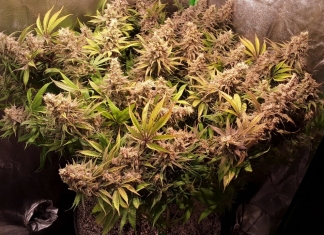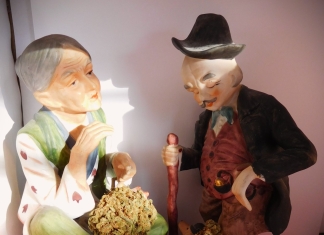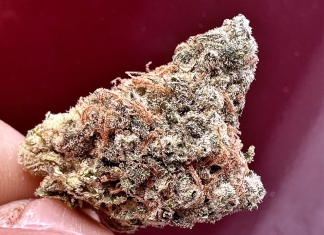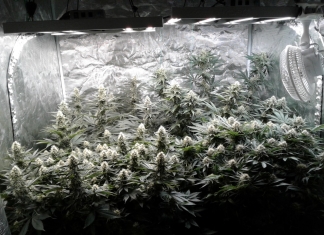The movement to legalize medical marijuana has its roots in the 1980s and early 1990s, the worst days of the US Aids epidemic. The disease was a death sentence, and stricken young men sought out marijuana for relief and solace. In San Francisco’s Castro District, a gay Vietnam veteran named Dennis Peron ran an illegal dispensary to supply them. Peron went on to co-write Proposition 215, which California passed in 1996, becoming the first state to allow medical marijuana – med for short.
Among all the things med is touted as doing, relief from wasting illnesses like Aids and cancer (especially during chemotherapy) is among the respectable. A reader in the UK writes that when his wife was dying of breast cancer, “I purchased a vaporizer for her, it quickly became invaluable for both pain relief and as a mood enhancer”. Though research is limited, a recent study found a quarter of cancer patients in Seattle use marijuana.
The concept of med is easy to mock, since so many users don’t have an urgent medical need. But while very sick people taking it to improve their quality of life isn’t medicine in the conventional sense, it doesn’t seem silly either. Thirty US states and a numerous countries have legalized med on the basis of anecdotal evidence that it can help.
While cannabis contains scores of chemicals, the most familiar are tetrahydrocannabinol (THC), which gets people high, and cannabidiol (CBD), a non-psychoactive compound often associated with medical benefits. Beyond this point, little is known about the plant’s capabilities and limitations as medicine, at least compared to any drug available in pharmacies.
That’s because in much of the world, including the US, it’s long been illegal or very difficult to research the marijuana plant for medical use.
So today, med can be understood as a folk remedy, an awkward compromise between the plant’s widely acknowledged medicinal properties and an unworkable legal situation.
Among the 30 legal states, each has its own list of which conditions qualify for med access. Arizona considers PTSD a qualifying condition, but Louisiana does not. In Delaware, doctor’s recommendations are relatively difficult to obtain, but in California they’re handed out after a three-minute video chat.
Even in its more accepted uses, no government or credible medical institution I know of attempts to answer basic questions, such as: should a patient with a specific condition eat or inhale cannabis? How much they should take? What is the ideal ratio of THC to CBD? (And that’s if consistent supplies are available, which they usually aren’t.) Instead patients are left to trial and error. While this works for some, it invites companies to develop products targeting insomnia, migraine, stomach pain or other conditions.
A US study found a significant reduction in demand for pharmaceuticals to address conditions like anxiety, depression and pain, in states where med is legal. Some patients clearly prefer Med. what’s not yet known is how well it performs relative to conventional medicine.
When the stakes are some form of mild discomfort, it may be tolerable to let someone experiment with med as they like. At other times more specificity is needed. US veterans groups overwhelmingly support med research following anecdotal evidence that it helps with post-traumatic stress disorder.
Veterans have a suicide rate roughly triple the US population. In life or death situations it becomes much more urgent to study the dosages, chemical compositions and other variables which have the most benefit.
Following media reports, which have touted it as a miracle cure, there’s a growing community of parents who attempt to treat their children’s seizure disorders with CBD oil. They’ve largely had to treat these devastating illnesses based on word of mouth or information they find online.
This is one example where cannabis pharmaceuticals makes more sense. The best known example is probably the UK firm GW Pharmaceuticals. The company’s first drug, Sativex, an oral spray with a 1:1 ratio of THC and CBD, has been approved in 30 countries, mainly in Europe, for MS-associated spasticity.
Next in the company pipeline is Epidiolex, a CBD formula aiming to benefit children with two rare and debilitating seizure disorders. After years of clinical trials it has been accepted for the US Food and Drug Administration’s fast track approval process and could win final approval as soon as June. (Aside from synthetic THC used for Aids and cancer-related loss of appetite, Epidiolex would be the first cannabis derived drug available in the US)
There’s justifiable excitement about medical breakthroughs which legalization may bring. But most haven’t arrived yet.
According to the US National Cancer Institute: “Studies in mice and rats have shown that cannabinoids may inhibit tumor growth by causing cell death, blocking cell growth, and blocking the development of blood vessels.”
Within the cannabis industry, the inclination is to spin positive developments to the greatest effect. So news of cannabis possibly displaying cancer fighting properties in lab tests is taken to mean: Weed cures cancer!
And this kind of misinformation can cause pain. After the reader mentioned above saw the vaporizer benefit his wife, he attempted to save her with treatments of cannabis oil. It was unsuccessful and cost more than he could afford. Another reader wrote in about a relative with advanced lung cancer, “I just wondered if you could recommend any sites, any type of oil, anything really to help.”
I can’t sadly. The only way to learn what might help is research, which remains difficult to do. Until then med will largely remain not quite medicine, not a joke but something in between.














